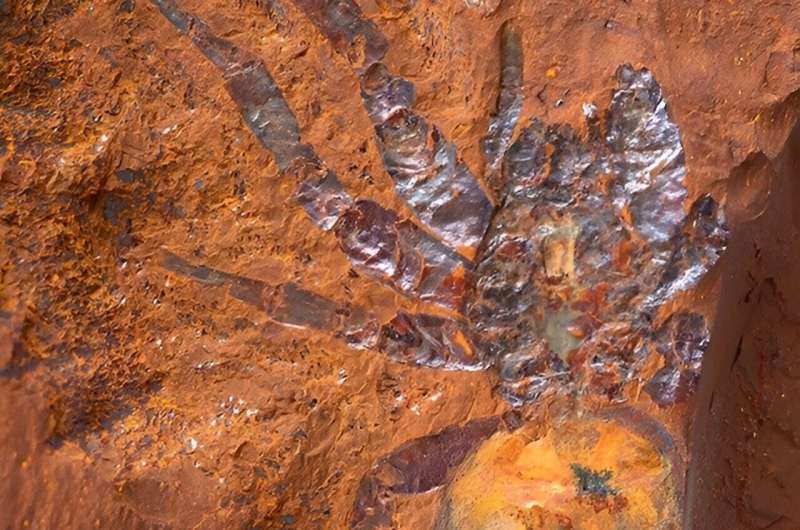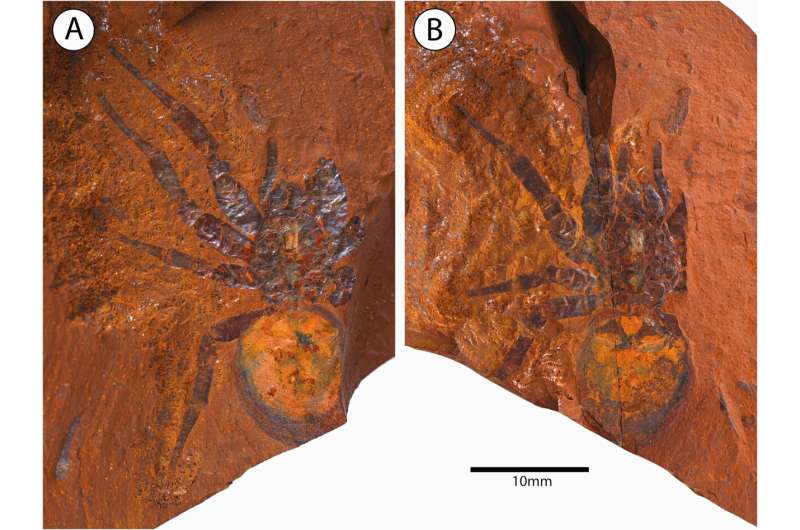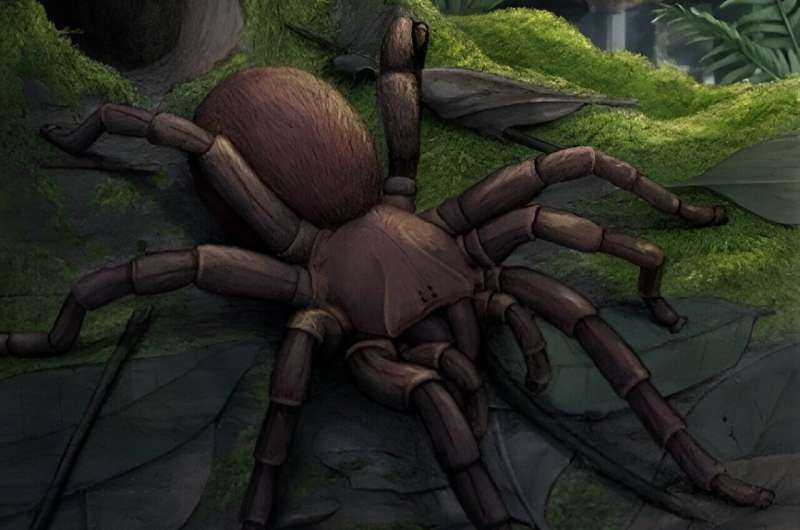This article has been reviewed according to Science X's editorial process and policies. Editors have highlighted the following attributes while ensuring the content's credibility:
fact-checked
peer-reviewed publication
proofread
Large fossil spider found in Australia

A team of Australian scientists led by Australian Museum (AM) and University of New South Wales (UNSW) paleontologist Dr. Matthew McCurry have formally named and described a fossil spider, Megamonodontium mccluskyi, which is between 11–16 million years old. The findings on this new genus of spider have now been published in the Zoological Journal of the Linnean Society.
Found at McGraths Flat, NSW, a fossil site known for its iron-rich rock called "goethite," the new genus of spider is the first ever spider fossil of the Barychelidae family to be found. Similar to the living genus, Monodontium (a brushed trapdoor spider) but five times larger (carapace length, ~10 mm; entire spider, ~50mm from toe to toe), the spider was named after Dr. Simon McClusky who found the specimen. A geospatial scientist based in Canberra, McClusky volunteers his time helping on palaeontological excavations.
Dr. McCurry said that there have been very few fossil spiders found in Australia which makes the discovery very significant.
"Only four spider fossils have ever been found throughout the whole continent, which has made it difficult for scientists to understand their evolutionary history. That is why this discovery is so significant, it reveals new information about the extinction of spiders and fills a gap in our understanding of the past."

"The closest living relative of this fossil now lives in wet forests in Singapore through to Papua New Guinea. This suggests that the group once occupied similar environments in mainland Australia but have subsequently gone extinct as Australia became more arid."
Queensland Museum arachnologist, Dr. Robert Raven, who was the supervising author of the study said this was the largest fossil spider to be found in Australia.
"Not only is it the largest fossilized spider to be found in Australia but it is the first fossil of the family Barychelidae that has been found worldwide."
"There are around 300 species of brush-footed trapdoor spiders alive today, but they don't seem to become fossils very often. This could be because they spend so much time inside burrows and so aren't in the right environment to be fossilized."
University of Canberra Associate Professor, Michael Frese, who used stacking microphotography to scan the fossils said that the fossils from McGraths Flat show an amazing level of detailed preservation.

"Scanning electron microscopy allowed us to study minute details of the claws and setae on the spider's pedipalps, legs and the main body. Setae are hair-like structures that can have a range of functions. They can sense chemicals and vibrations, defend the spider against attackers and even make sounds."
The fossil is now housed in the AM's paleontology collection and is available online for researchers to study.
A separate paper will be published on the same day in the Zoological Journal of the Linnean Society describing a jumping spider from McGraths Flat. These are separate publications, but both describe fossils from the same site. Matthew McCurry and Michael Frese are authors on both pieces of work.
More information: Matthew R McCurry et al, A large brush-footed trapdoor spider (Mygalomorphae: Barychelidae) from the Miocene of Australia, Zoological Journal of the Linnean Society (2023). DOI: 10.1093/zoolinnean/zlad100
Journal information: Zoological Journal of the Linnean Society
Provided by Australian Museum



















